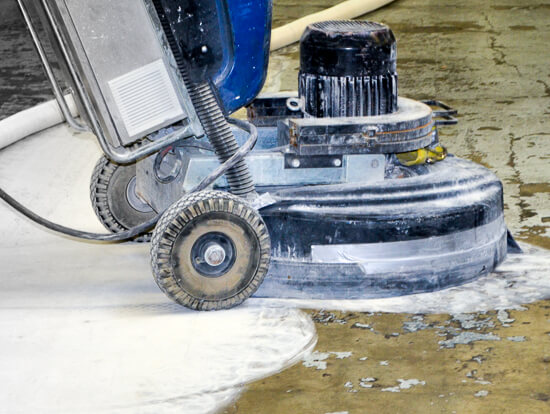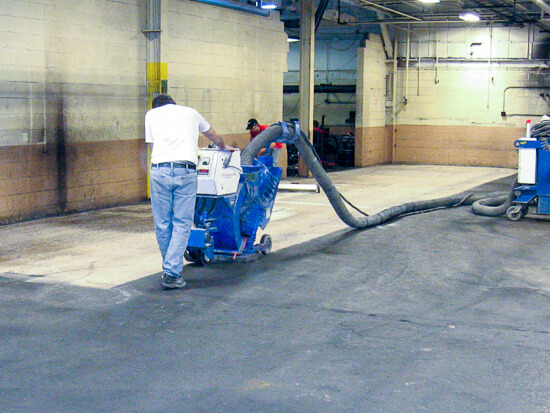EVERY CONCRETE FLOOR IS DIFFERENT so surface preparation for concrete floors has its own set of challenges. Floor moisture, concrete contamination, age and the condition, are some of the variables. That, and there are no two concrete admixtures that are the same. Choosing the right floor preparation method and primer prior to installing a floor coating system is vital to success.
ASSESSING CONCRETE FLOOR CONDITION AND AGE is vital to confidently specifying the type of concrete preparation and primer. An eroded, old slab which has exposed aggregate will require surface prep that reaches between the aggregate, generally shot blasting. A new concrete slab cannot generally be coated with conventional primers before 28 days from pouring. CFI offers WearCOAT 1080 to shorten that wait to just 10 days.
CONTAMINANTS AND DIRT can exist on both old or new concrete slabs. Scrubbing or pressure washing may be required to clean a slab prior to mechanical abrasion. Contamination can be obvious on old slabs, but some containments may be hiding below the surface. On new slabs, release agents for tilt-up construction are just one of the many problems that can be introduced during new construction. If a slab is heavily oil soaked, special cleaning, preparation, and primers may be necessary.
HIGH MOISTURE CONTENT OR VAPOR PRESSURE can cause significant issues when defining proper concrete floor coating application. In situ moisture (RH) or calcium chloride tests can help assess the need for special preparation or specifying primers like WearCOAT 1080. If an issue is present, it needs to be addressed. It is also important to address the environmental conditions that may be at the root cause of the issue. Broken underground pipes, poorly routed downspouts, or even landscaping can affect moisture and vapor pressure in a slab.
If you have questions on these or other issues for your specific flooring project, please contact the coatings professionals at Coatings For Industry, and consult SSPC or ICRI specifications and publications.


